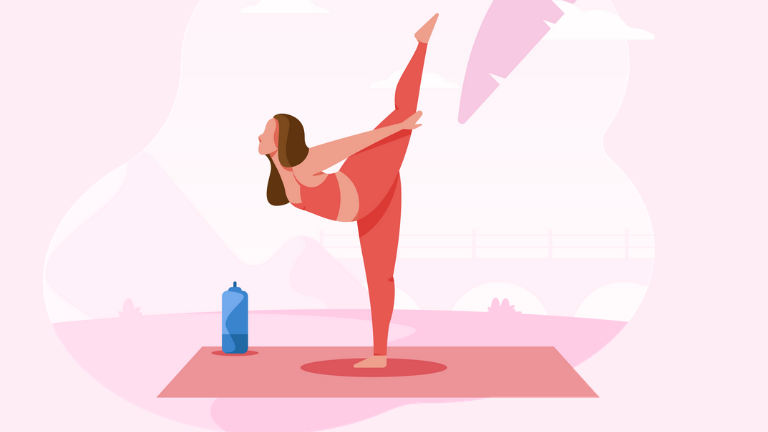Breathing Exercises for Optimal Well-being

We enter the world with a first breath, and from then on, we continue the process of breathing for the rest of our lives. However, just because breathing is an automatic process doesn’t necessarily mean it always operates at its best. The challenge with breathing lies in its seeming simplicity, which often leads us to overlook its potential for improvement.
In this article, we’ll explore the scientific benefits of optimal breathing and provide practical exercises to put this knowledge into action. We will delve into how improving your breathing can become a powerful tool for enhancing your overall well-being, from relieving tension in your neck and shoulders to fostering calmness and mindfulness, boosting energy levels, and improving digestive health.
The Mechanics of Breathing
Every breath profoundly influences your state of being. Research shows that your breath has the power to influence your heart rate, digestion, recovery (including muscles), brain, sleep quality, stress levels, and hormone balance. Each breath subtly impacts your heart rate, digestion, muscle recovery, brain function, and hormone balance. Even the smallest adjustments to our breathing patterns can yield significant benefits for our bodies.
So what’s behind the mechanics of our breathing patterns? When we inhale, air enters our lungs. Within the lungs, oxygen from the air is absorbed into our bloodstream. This oxygen becomes the fuel for our body’s energy production, but in the process, we also generate carbon dioxide (CO2). This CO2 is transported back to the lungs. As we exhale, we release the air, which is now oxygen-depleted and rich in carbon dioxide.
Breath and our nervous system
Our nervous systems consist of branches with opposite functions. For instance, within the peripheral nervous system responsible for controlling our muscles, there are two main branches:
• The somatic nervous system: This system gives us voluntary control over muscle functions, such as consciously contracting skeletal muscles when we want to move.
• The autonomic nervous system: On the other hand, the autonomic nervous system is in charge of all the unconscious and involuntary functions in our body, including regulating heart rate, blood pressure, and digestion.
To better understand the autonomic nervous system, think of it as having two pedals in a car:
• The accelerator pedal: This is like a gas pedal that’s pressed during life-threatening situations. When the accelerator is activated, your body revs up to provide the necessary energy for survival. This means your heart rate increases, your blood pressure goes up, and more blood flows to your muscles. In simple terms, you’re in “fight or flight” mode.
• The brake pedal: Just like in a car, there’s a brake pedal in your autonomic nervous system too. It’s there to slow things down and promote rest after a high-energy situation. When you press the brake pedal, your heart rate and blood pressure drop, and your organs receive better blood flow. This state is often referred to as “rest and digest.”
As human beings, we can use our breathing as a way to gently press on the brake pedal of our autonomic nervous system. Proper breathing techniques can help us calm down and reduce stress. Conversely, our breathing can also act like an accelerator, essentially “switching us on.” Unfortunately, many times, our breathing patterns unconsciously push the accelerator pedal, causing us to take in excess energy and not allow our bodies enough time to rest.
Put simply: On average, we breathe too quickly. – Aäron Spapens, MD & Well-being Expert
So, how can you push the brake pedal to experience more relaxation? The answer is simple: breathe out for longer than you breathe in.
How often do you breathe?
Research demonstrates that a breathing frequency of 5.5-6 breaths per minute (5.5-6 bpm) optimally increase heart rate variability (HRV). HRV is a metric of how well a body can adapt to changes. According to a review, people with high heart rate variability are usually less stressed and happier. In general, lower breathing frequencies are shown to positively impact HRV whereas higher breathing frequencies show opposite effects.
⏱️ So, what’s your breathing rhythm? Take your phone or stopwatch and measure how many times you breathe in in a minute.
If you breathe more than ten times a minute, there is tension or stress in your body that is making you breathe more rapidly than necessary. To overcome this, sit quietly and relax your body. Try to lengthen your exhalation and keep this up for a few minutes. Your breathing frequency will decrease, which means you are stimulating your brake pedal and becoming calmer.
The benefits of nasal breathing
In addition to the frequency of breathing, the way you breathe is also important. According to this article, breathing through your nose, also known as nasal breathing, promotes good health. There are many advantages to nasal breathing over mouth breathing, but we will highlight the two most important ones:
During nasal breathing, nose hairs clear the air of particles (such as bacteria, fungal spores, or viruses). Compared to mouth breathing, less of these particles stick to the mucus on the surface of the lower airways, such as the windpipe and bronchi, during nose breathing. Research demonstrates how this reduces the risk of asthma and lung infections. Also, the airflow slows down due to the intricate nasal structures, which lowers the breathing frequency. You know by now that this stimulates your brake pedal!
💡 Nasal breathing should be your default mode when possible, so try to reduce your mouth breathing whenever you can.
Three Simple Breathing Exercises
Fortunately, it’s very simple to work on your breathing. You’re always doing it! Below, we have provided a set of easy, step-by-step breathing exercises that can have a profound impact on your overall well-being when practiced regularly. As with diet and exercise, it may take a while before you experience the positive effects.
Breathing exercise for mouth-breathers:
• Breathe in through your nose (minimum of 2 seconds)
• Breathe out through your mouth and extend your exhalation* (minimum of 4 seconds)
• Pause (until you feel the need to breathe in again)
• Breathe in through your nose
• Breathe out through your mouth and lengthen the exhalation more and more
• Pause
• Repeat 10 times (and work your way up to 50 repetitions daily)
💡 Lengthen your breathing by giving a little counter-pressure with your exhalation so that your cheeks bulge slightly
Breathing exercise for nose breathers:
• Breathe in through your nose (minimum of 2 seconds)
• Breathe out through the nose (minimum of 4 seconds)
• Pause (until you feel the need to breathe in again)
• Breathe in through the nose (minimum of 2 seconds)
• Breathe out through your nose (minimum of 4 seconds)
• Pause
• Repeat this exercise 10 times (and work your way up to 50 repetitions daily)
Deep relaxation exercise:
• Lie down quietly with your hands on your belly
• Breathe in through your nose
• Breathe out through your nose (or mouth) and let your shoulders relax
• With every inhalation, your belly rises slightly. With each exhalation, your belly sinks in
• Try to get your breathing more and more from your belly
• Now close your eyes and keep on doing the exercise for 5 minutes
• If you can, extend the exercise (10 or even 20 minutes)
⏱️ So, what’s your breathing rhythm? Take your phone or stopwatch and measure how many times you breathe in a minute.
The Benefits of Breathing Techniques
Establishing good breathing techniques can enhance your overall well-being. Here’s how addressing breathing irregularities can positively impact your health:
1. Relief for Neck and Shoulder Tension
The muscles that are connected to your neck and shoulders (the auxiliary respiratory muscles) help you breathe faster when needed. According to research, proper posture and calm and deep breathing can prevent these muscles from overloading. Just as resting your legs after a long run alleviates muscle pain, adopting a calm breathing pattern can ease tension in your neck and shoulders.
2. Calmness and Mindfulness
Maintaining a steady and calm breathing rhythm can reduce feelings of being rushed or tensed. By breathing slowly and balanced, you can decrease adrenaline production. This will promote a more relaxed and centred state of mind.
3. Boosted Energy Levels
Consistent and moderate breathing ensures efficient use of your energy, providing you with sustained and balanced energy throughout the day. Improved energy levels can also help reduce sugar cravings and help you maintain a balanced diet.
4. Improved Digestive Health
Calm and slow breathing can help to optimise nutritional absorption, by promoting optimal blood flow to your gut. Improved digestive health can also alleviate common issues like bloating, flatulence, and frequent burping.
We hope you have enjoyed learning more about the benefits of breathing exercises and will be able to incorporate them into your daily routine.
Our blog is backed by extensive research from multiple medical sources, although not all are cited here. The OpenUp editorial team and lifestyle experts have conducted thorough research; please feel free to contact us for more information on the additional references.




